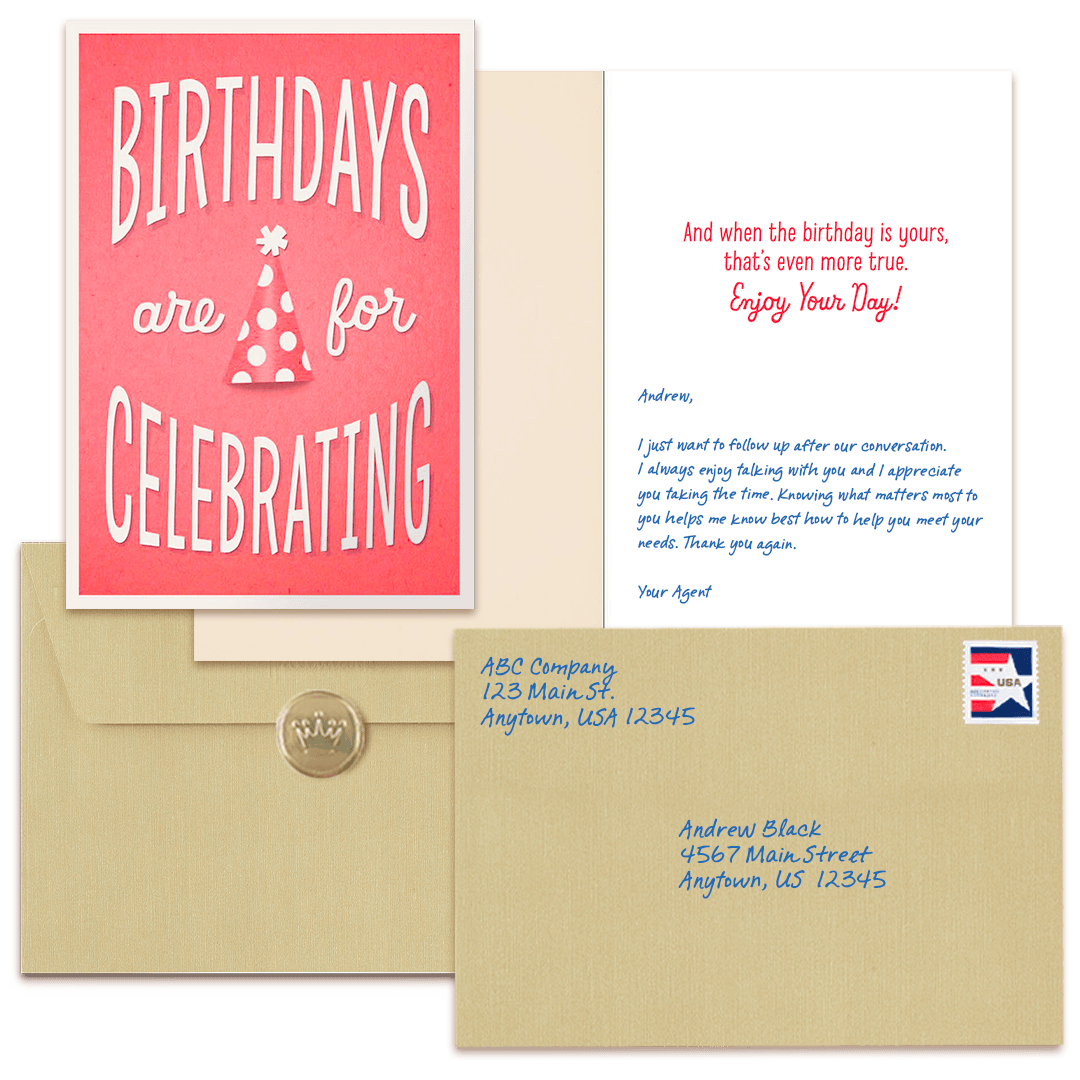CX That Puts People First: What Financial Service Customers Expect in 2025—and How Leading Brands Are Delivering It

A Conversation With Sean Albertson, CX Leader, International Speaker, Award-Winning Author, and Founder, CX on the ROCKS Collective
From onboarding to anniversaries, see how financial brands are blending empathy, personalization, and smart tech to build lasting trust.
Introduction:
When Forrester defines customer experience (CX), they keep it simple:
"CX is how customers perceive their interactions with your company."
And for those interactions to be truly great, they must be:
Useful — delivering clear value
Usable — easy to access and navigate
Enjoyable — emotionally resonant and memorable
That’s where the financial services industry faces both its greatest challenge and greatest opportunity.
Whether someone is opening a new checking account, filing an insurance claim, or planning for retirement, their expectations are higher than ever. Yet, only 37% of financial institutions have a formal CX plan in place, and overall customer satisfaction scores across the industry continue to decline.
In a digital-first world, speed and convenience are expected. But they’re no longer enough. The institutions that stand out in 2025 will be the ones that pair efficiency with empathy and offer customer experiences that are both personalized and human.
In this blog, we explore how two leaders—Sean Albertson, Founder ofCX4Rocks and former Head of Client Experience at Charles Schwab, and Patrick McCullough, President of Hallmark Business Connections—are helping financial brands do just that.
Their conversation offers a look at the shifts, strategies, and stories shaping the future of customer experience in financial services—from removing friction and identifying meaningful moments to designing emotionally resonant touchpoints that drive loyalty.
Watch the full Q&A-style conversation above, or keep reading for a recap of their key insights—and how your team can apply them.
How to Deliver a Differentiated Customer Experience in Financial Services

As customer expectations rise and digital tools multiply, standing out is harder than ever.
But the brands that do? They’re the ones removing friction, responding meaningfully, and proactively reaching out in the moments that matter.
Sean and Patrick’s conversation offers practical takeaways for institutions looking to not only improve satisfaction scores but also build loyalty, trust, and emotional engagement in an increasingly digital world.
1. Remove The “Rocks”
Friction is one of the biggest threats to customer loyalty—and for many financial institutions, it’s often hiding in plain sight: inside complex onboarding flows, siloed support channels, and delayed follow-ups.
Gartner research reinforces that 96% of customers who experience high-effort interactions, such as being treated like a number or having to repeat information, become disloyal.
Albertson’s 4ROCKS Framework identifies these barriers and provides a roadmap to eliminating friction, creating seamless journeys, and turning challenges into competitive advantages. This framework stems from a personal realization about customer experience.
Sean Albertson, CX Leader, International Speaker, Award-Winning Author, and Founder, CX on the ROCKS CollectiveI was hiking with my sons, and one of them asked why the river isn’t straight. Before I could answer, my older son said he had learned in school that it’s because of the rocks. The rocks get in the way of the water and cause it to shift and turn and create erosion, which brings more rocks in and causes the river to wind and curve.
And that gave him an idea.

Sean Albertson, CX Leader, International Speaker, Award-Winning Author, and Founder, CX on the ROCKS CollectiveThe customer journey is not a single event. It’s over touchpoints and time. It’s navigating around the rocks in the path and fighting the erosion. It’s a multi-step, multi-pronged journey,
he explains.
Sean Albertson, CX Leader, International Speaker, Award-Winning Author, and Founder, CX on the ROCKS CollectiveData proves that when something is hard for a customer, they are more likely to be disloyal. If you’re creating too many rocks in the journey, that’s the problem.
First Impressions Matter:
According to OvationCXM’s 2022 Financial Services CXM Impact Report, 6 in 10 business owners described their most recent onboarding experience with a financial institution as “somewhat difficult” or “extremely difficult.”
Even more striking, 76% admitted they abandoned the process mid-way because it was too complicated. The top reasons? Confusing instructions and hard-to-find information.
This reflects the research shown here,Think Like a Customer: Why Beginnings and Endings Are So Important in the Customer Experience:
The most emotionally charged moments in any journey are the start and the end. Nail these, and you build trust and loyalty.
When the first interaction feels clunky, transactional, or overly complicated, customers begin their journey with doubt. That’s why high-performing brands go beyond efficiency to create welcoming, easy, and personalized onboarding moments that signal, “You matter to us.”
Friction Along The Way:
Once onboarded, there are often similar ‘rocks’ or points of friction along the way related to the speed of resolution. Sherri Shwartz, Forbes Council Member, shares:
70% said it took two or more contacts to resolve an issue
One-third said it took four or more
But speed alone isn’t enough to deliver outstanding support.
Sean Albertson highlights in a recent article:

Only 38% of clients say their financial institution is easy to interact with.

Just 35% of clients say their provider's website is easy to use
In contrast, top financial brands deliver seamless, low-effort experiences 70% of the time and are 4x more likely to empower frontline employees to act.
So, how do we address friction points like a confusing online form, a loop of repeated support calls, or a missed opportunity to follow up after a key customer milestone?
Implementing Change
Many organizations believe their digital transformation efforts have solved the customer experience—but in reality, those efforts may have introduced new complexity. To deliver truly differentiated CX, financial institutions must:
Break down silos between systems and team
Expand visibility across the full customer journey
Empower agents with the tools and authority to act
Simplify digital touchpoints, especially self-service and onboarding
2. Personalize Through Situationalization
Personalization is more than using a client’s name in an email. It’s about understanding the moments that matter and responding with empathy, context, and timeliness.
Sean Albertson recounts hearing a fellow panelist use the term situationalization: addressing the situation + personalization.

When frontline teams know what’s going on in a customer’s world—whether it’s a major life event, loyalty milestone, or renewal period—they can respond in ways that deepen the relationship.
Take the story of a longtime client turning 102. After more than 30 years with their financial advisor, what stood out most wasn’t transactional—it was a personalized Hallmark birthday card from their advisor with warm wishes and a handwritten note. That simple, human gesture was the moment the client shared with friends and family. He was so moved he even visited his agent the next day to personally say thank you.


Contrast that with another tale: a cardholder celebrating 20 years with their credit card company. When asked what they received for the loyalty milestone, the answer was a bill.

Both stories reflect how touchpoints can either earn loyalty or erode it.
Albertson reminds us: “CX is a team sport.”
It’s not just about frontline staff or automated journeys. From leadership to operations to marketing, everyone plays a role in building experiences that feel human.
These stories are important for not just our customers but our teams. “We don’t remember lists or stats. We remember stories and people. It’s what we as humans have done for millennia—tell stories to foster connections,” shares Albertson.
It’s stories—and the emotional resonance they carry—that move people to act. That’s what great customer experience is rooted in: not just automation or analytics, but empathy, relevance, and shared understanding.
3. Stand Out With Tangible & Emotionally-Driven Touchpoints
In an era of digital fatigue, it’s often the analog moments that resonate. A personalized Hallmark card isn’t just mail—it’s a message that stands out and encapsulates what the Hallmark brand has signified for over 100 years.
Research shows that emotionally resonant experiences are more likely to be remembered, shared, and valued. Cards live on desks and bulletin boards. They’re saved, revisited, and talked about. And they stand out in a sea of digital pings and push notifications.
Plus, in a tumultuous and ever-changing market, acknowledging shifts and proactively reaching out can do a lot to dissuade your clients from making any rash decisions. Reassure them in their times of need and celebrate when the market is bullish.

The Hallmark Difference
In this case study, a company wanted to test Hallmark cards against its other direct mail formats to see if it would make an impact on marketing results. The outcome? A statistically significant improvement on ROAS by 50%.
Another Hallmark client shares, “I sent out Hallmark cards for the first time instead of generic cards and several of my customers called me to tell me how much they loved receiving a Hallmark card.”
Hallmark Business Connections offers scalable solutions for sending meaningful communications at key moments—from welcome to birthdays to policy renewals and annual reviews. These tools make it easy to empower employees, create consistency across locations, and humanize client communication at scale.
Conclusion: A Human Advantage in the Age of AI
AI is the rising tide lifting every boat. It can streamline operations, anticipate needs, and support efficiency across the board. But it can’t replace human connection.
The financial institutions that thrive in 2025 won’t just have better tech—they’ll have better timing, empathy, and outreach. They’ll understand how to balance technology with humanity.
And they’ll make sure that, at every step of the journey, their customers feel seen, valued, and understood.
Whether it’s removing a frustrating friction point, recognizing a milestone with a heartfelt note, or empowering your team to act with empathy, the opportunity is clear: the brands that win in 2025 will be the ones that put people first.
Putting People First, at Every Step of the Journey
Hallmark Business Connections helps financial institutions deliver on that promise with scalable solutions that deepen trust, show appreciation, and strengthen client relationships.
From birthday and anniversary greetings to personalized notes of appreciation and loyalty, Hallmark makes it easy to engage customers and employees with the warmth and authenticity your brand stands for.
Spotlight on Connect by Hallmark
Connect by Hallmark – a powerful solution designed for financial advisors and relationship managers to build long-term trust and loyalty with clients, leveraging bulk buying discounts and centralized support.
Additional tools like Automatic Mailings let you schedule recurring touchpoints tied to birthdays, anniversaries, or milestones, simply by uploading your mailing list, keeping you top of mind and building stronger brand affinity over time.
Want to explore all of Hallmark’s solutions for financial services? See the full suite of services here.
If you’re passionate about elevating CX through empathy, design, and dialogue, consider joining theCX on the ROCKS Collective—a growing community of leaders and practitioners shaping the future of customer experience.
In this Article
-
Introduction:
-
How to Deliver a Differentiated Customer Experience in Financial Services
-
1. Remove The “Rocks”
-
2. Personalize Through Situationalization
-
3. Stand Out With Tangible & Emotionally-Driven Touchpoints
-
The Hallmark Difference
-
Conclusion: A Human Advantage in the Age of AI
-
Spotlight on Connect by Hallmark
Products
Similar Articles







